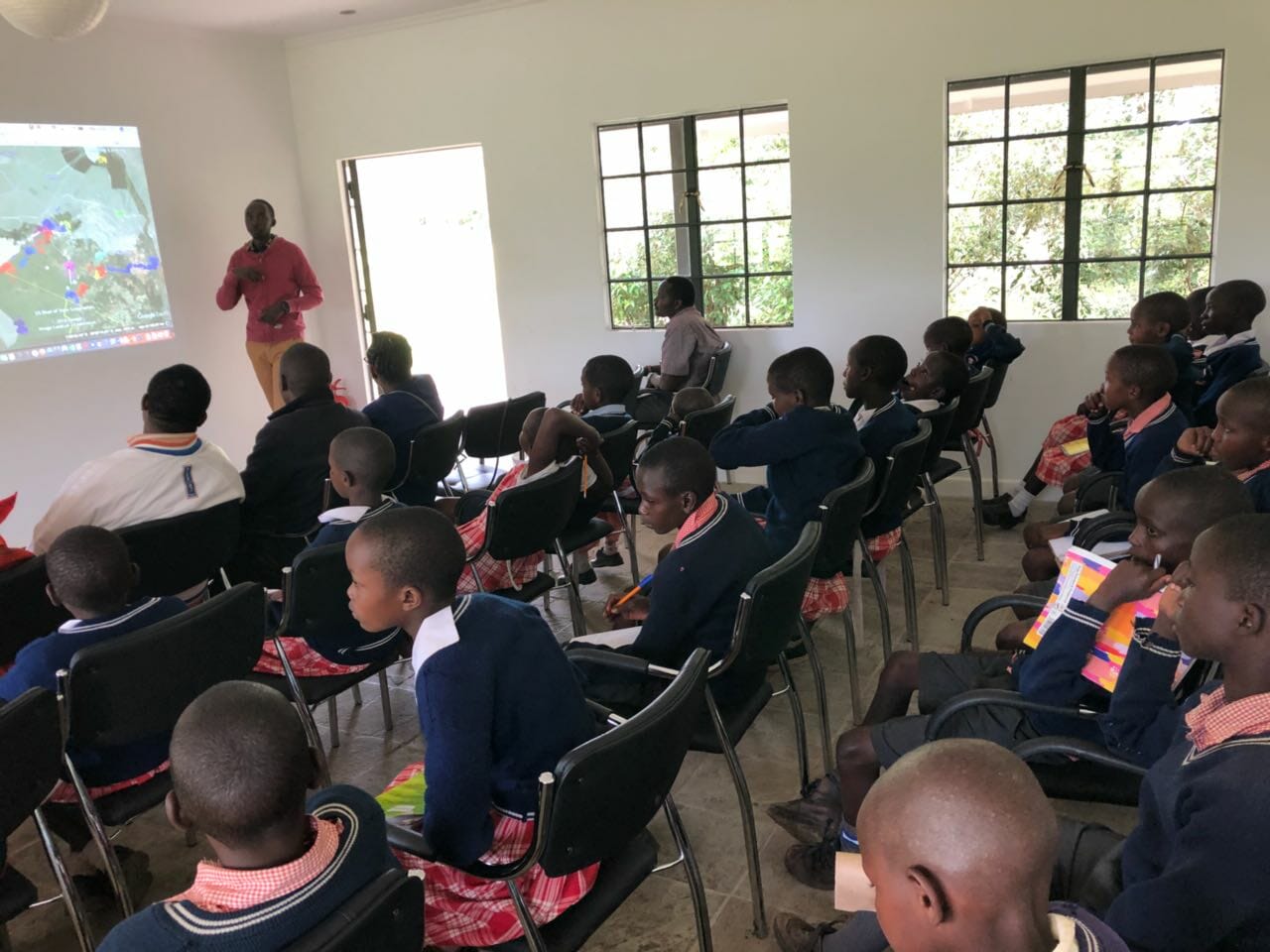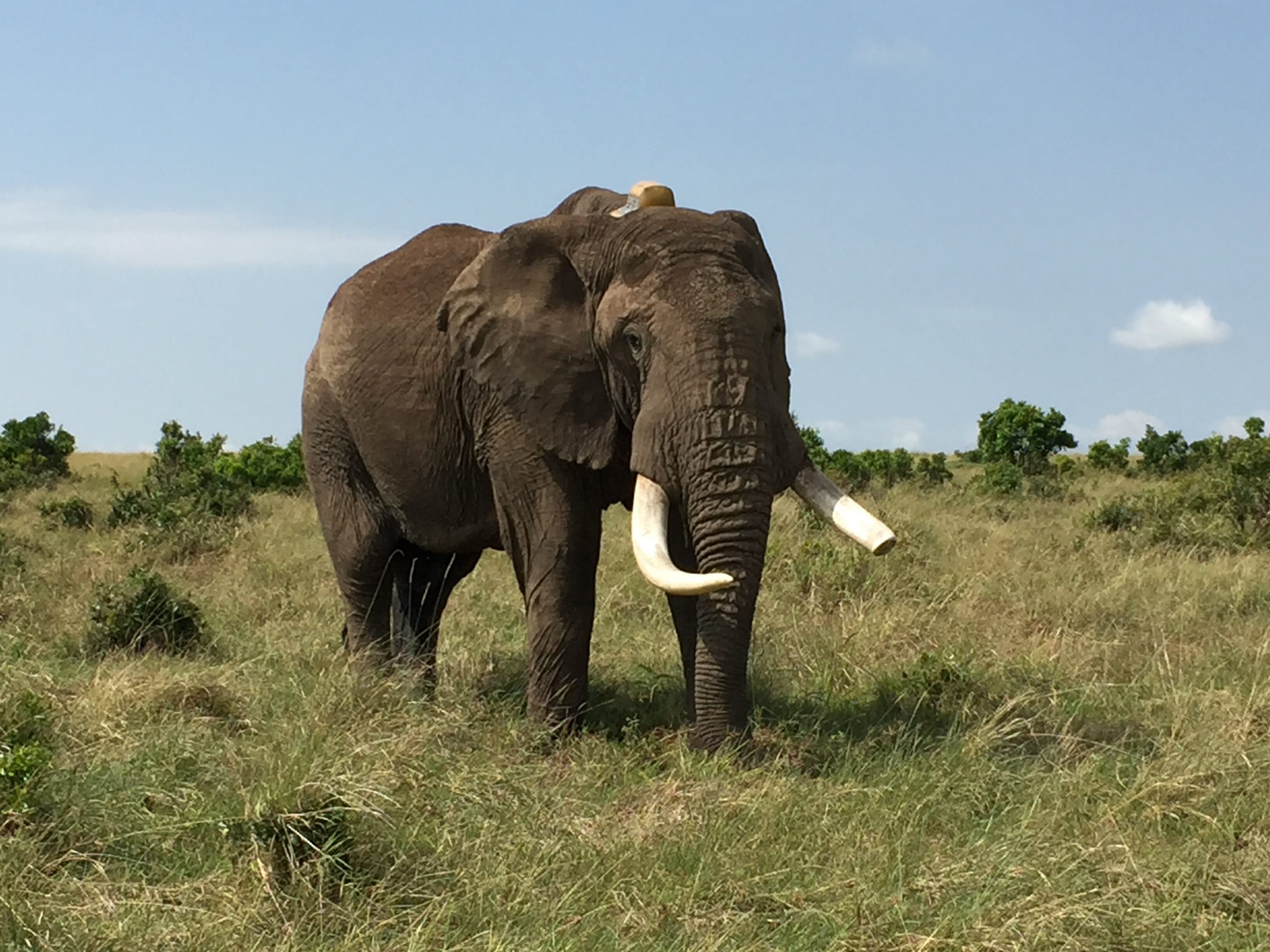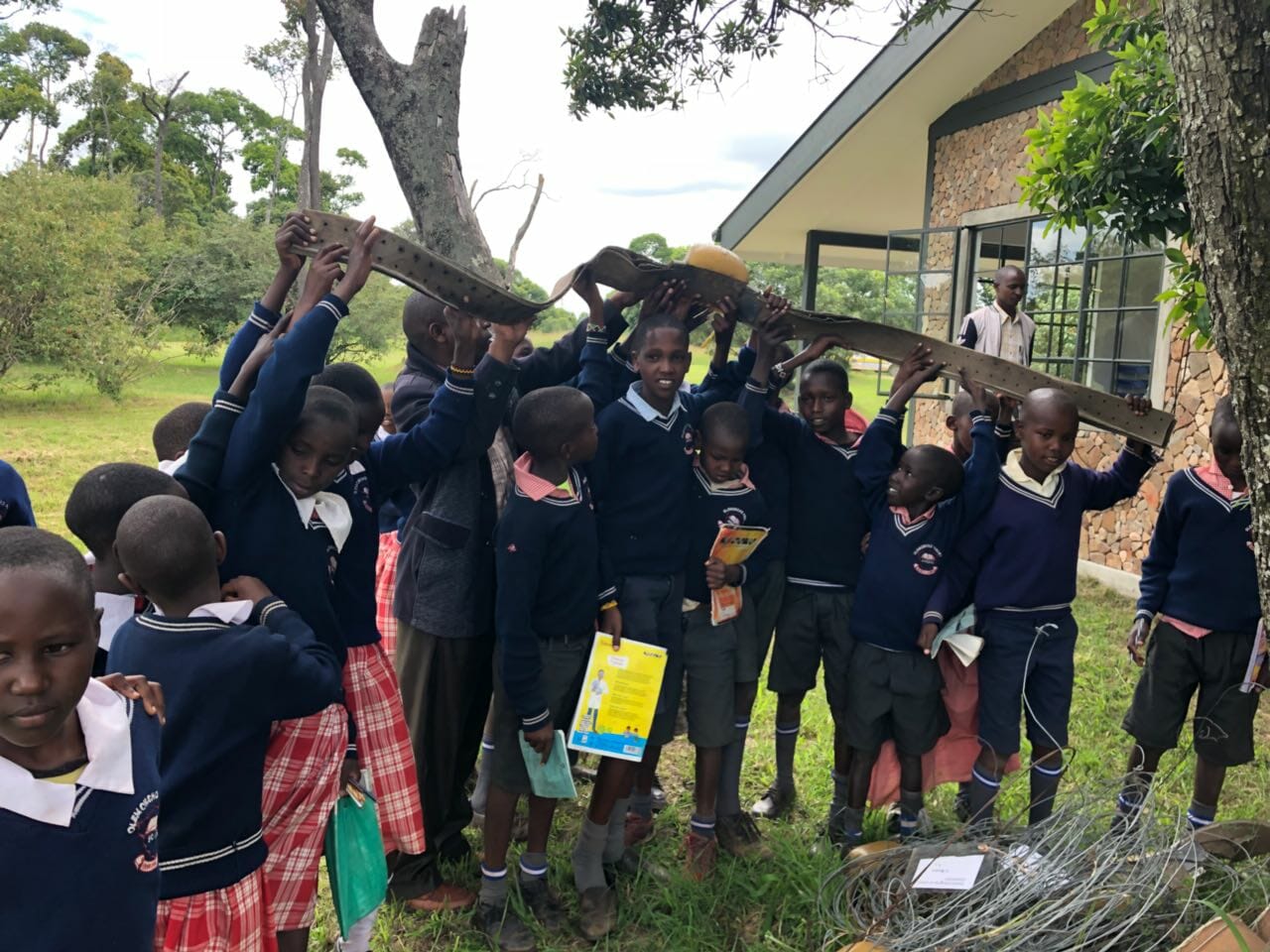On May 23 Mara Elephant Project was thrilled to host children from Olemoncho Primary School. MEP Tracking Manager Wilson Sairowua hosted 22 children and four teachers at MEP HQ and they were given the full MEP visitor experience.
Wilson giving the school children the MEP presentation at MEP HQ.
They watched the Mara Elephant Project video, were given the MEP school presentation (email Claire if you’re interested in using this) and experienced a game drive in Mara North Conservancy to see our work in action by visiting collared elephant Kegol. 
MEP collared bull elephant Kegol. One of our “big tusker” elephants.
A Maasai Mara wildlife conservancy outreach communication officer requested the visit for the children to MEP HQ and we were more than happy to oblige.
“After the presentation, the children got to see and hold an elephant collar, which gave them the perspective of how big and heavy the collar is. They later got to see snares collected in the field by MEP rangers and a drone demonstration. Seeing MEP rangers is very good for the local children as many of them were interested in working as a ranger.” MEP Tracking Manager Wilson Sairowua

The children holding up the large and heavy elephant collar.
According to Wilson, the children wanted to know more about why MEP collared elephants. They asked really insightful questions about human-elephant conflict and how MEP responds to these incidents at night. One of the more difficult questions to answer from local children is why elephants would crop raid when it appears there is plenty of grass in the conservancies, especially after the rain the Mara has seen. Many of these school children have parents who are farmers or own cattle and have seen first-hand the damage a crop raiding elephant can do to their farms or have experienced having to share limited natural resources with the wildlife and their cattle.
“My idea to demonstrate to the children why this would happen is to compare it to cattle, since most of their families own cattle. I think elephants go into farms because of the high mineral content of the crops just like cattle use the salt licks because of the minerals they find in them. I also explained how sometimes when a herder is not with the cattle and the cattle roam free, they can accidentally go into someone’s farm. The same theory can apply to elephants. There was silence after the explanation. So, that shows, we have more work to do in educating the youth on these issues.” Wilson Sairowua
Our hope is that the children leave MEP with a different perspective on the wildlife they are sharing their landscape with. We want them to become the champions of wildlife and their communities by engaging in conservation activities around the Mara to protect this precious ecosystem they call home. MEP rangers are an amazing example of this in action as all are Maasai from the local area who grew up to become pillars of their community. According to Wilson these children are thinking creatively and engaging in wildlife conservation and there is hope for the next generation to take on this challenge.


